Go West! Fantastic forests by ferry
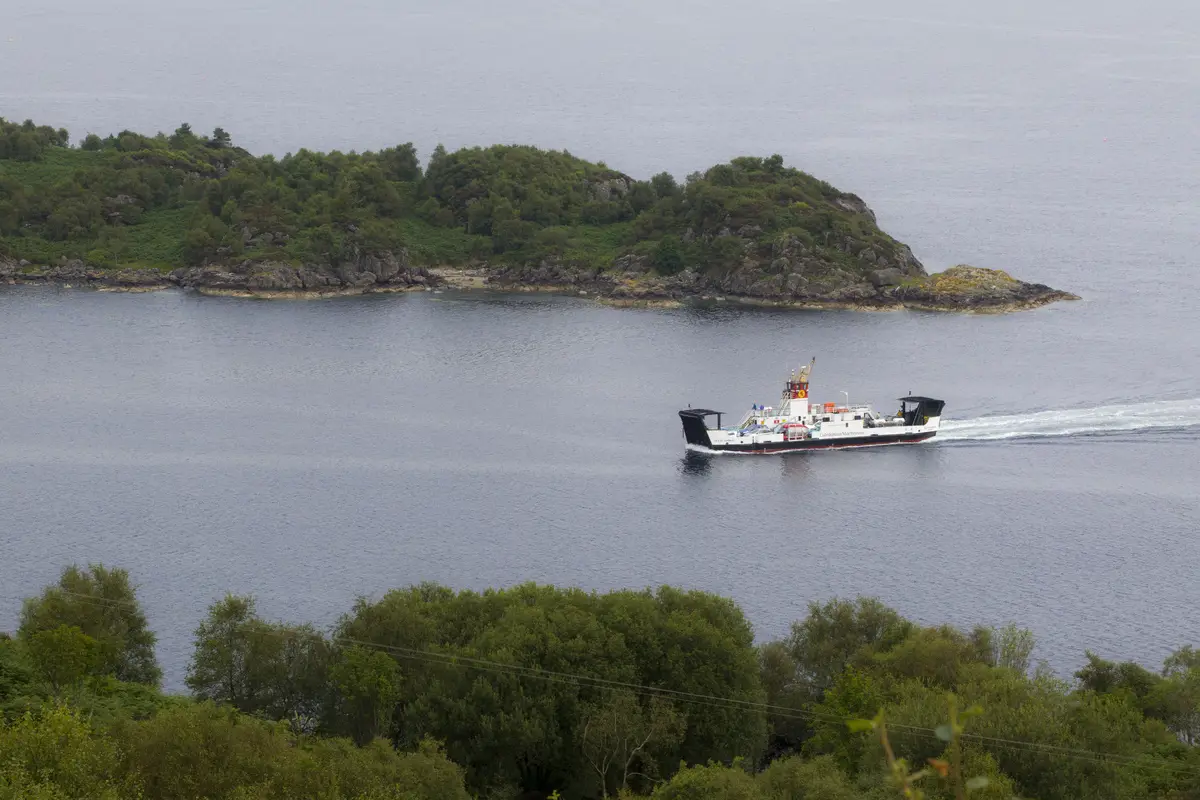
There’s nothing better than escaping the hustle and bustle of the city and getting out into the wild. Crossing some water to get there makes the adventure all the more exciting. There are hidden forest gems and well-travelled trails all across Scotland’s coastline and islands, just a boat-ride away—many more accessible than you might think.
The west of Scotland is internationally renowned for its moody, windswept, exquisitely beautiful islands, filled with some of the country’s most incredible scenery, from mountain top to forest glen, and its coastal forests are some of the most beautiful in the world. Here’s our short guide to some of the highlights the West of Scotland has to offer, all accessible by ferry, with forest walks in easy reach by bike or by car.
The road less travelled - adventures on the west coast
The Cowal Peninsula, Argyll
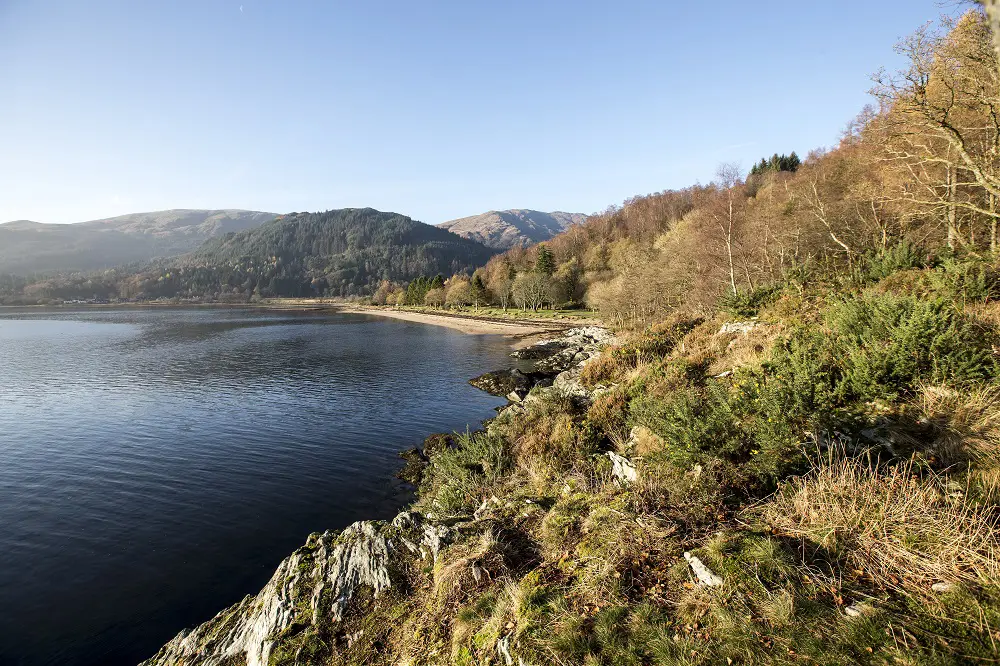
Less well known than other locations in the west, when it comes to fantastic forests, the Cowal peninsula is home to more than a few of Scotland’s jewels in the crown. It’s very accessible by ferry, with ships leaving Gourock—just an hour’s drive from Glasgow—that will take you into the heart of this lush and fertile crescent, with waterfalls and shaded forest walks galore. Explore a little further, and you can see some of the highlights of Argyll Forest Park.
Anyone who has visited Puck’s Glen (pictured below) would agree it is an absolutely unmissable stop on your journey west. The narrow gorge, known as Eas Mor—‘great falls’ in Gaelic—is bordered by a steep trail, leading up to a viewpoint with an impressive panorama over the surrounding hills. Named for the fairy trickster in Shakespeare’s A Midsummer Night’s Dream, this unique forest is truly magical. Steve, a Forestry and Land Scotland ranger who works in the area, sounds a spooky note of caution: “Watch out for mischievous spirits believed to make their homes in this dramatic rocky gorge!”
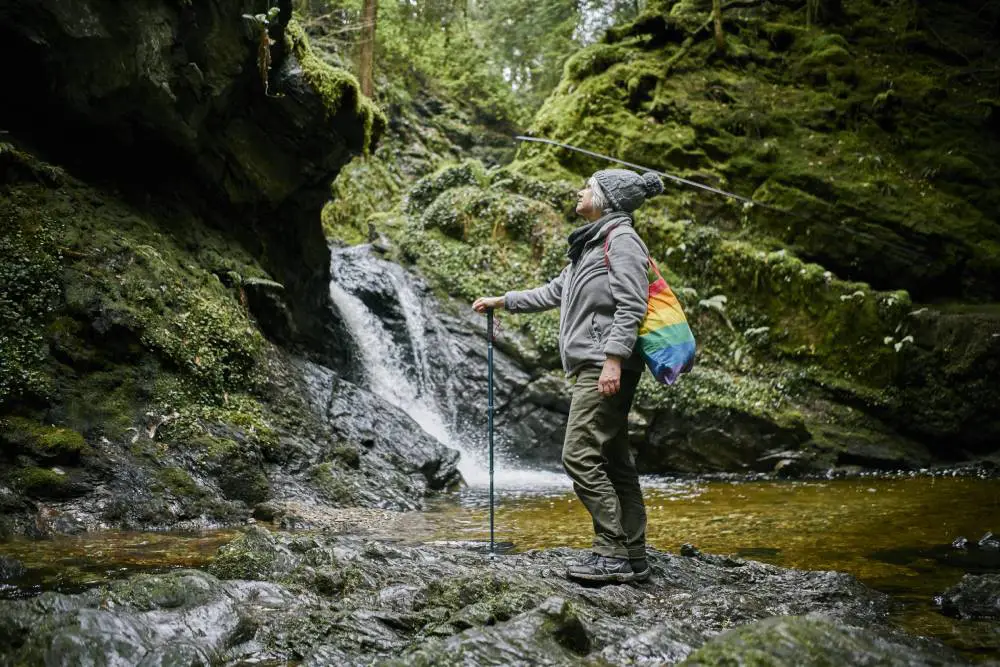
There are many more highlights on the former Benmore Estate, donated to the Forestry Commission in 1928 by Harry George Younger. Loch Eck offers a picturesque spot for a picnic on a sunny day, with gorgeous views. You might even glimpse a red squirrel or two amongst the trees, and if you’re a kayaking enthusiast, you can launch boats from Jubilee Point.
For proper forest adventures, visit the sandy beaches of Ardentinny (pictured above) and wander a network of woodland trails, or venture deeper into Argyll Forest Park to see Glenbranter, a majestic woodland of ancient oaks, birch and hazel.
“No matter if you are looking for a short walk or an all-day challenge bike ride, Glenbranter has it all,” says Steve. "Alternatively, those looking for a fitness challenge can spend the day taking on the demanding Loch Eck cycle loop.” A brilliant trip for the whole family—bring the bikes along!
Getting there
- Calmac Ferries: Gourock to Dunoon (on foot or by bike)
- Western Ferries: McInroy's Point to Hunter's Quay (for vehicles)
- Bikepacking Scotland's Argyll route
- More information about the Cowal Peninsula at Wild About Argyll
The Kintyre Peninsula, Argyll
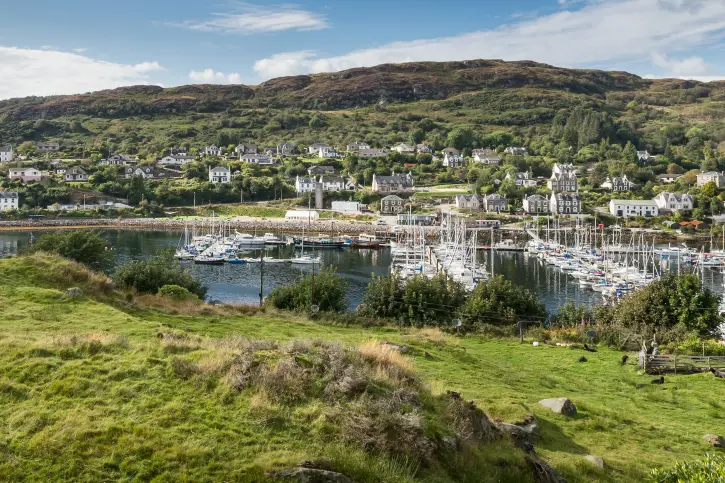
Travelling further west, you can get a ferry from Portavadie, near Loch Fyne, to the pretty, photogenic harbour at Tarbert (pictured), where we have some very pretty trails accessed from the village, taking you up to and around Tarbert Castle.
From here, you can explore the whole of the Kintyre peninsula. Stretching roughly 30 miles, from East Loch Tarbert all the way down to the Mull of Kintyre, there are stunning beaches with panoramic sea views, and the chance to spot a multitude of species, like soaring birds of prey.
The National Cycle Network Route 78 passes right by the forest entrance.
Getting there
If you’re planning to visit Kintyre after some of the forests in Cowal, you can catch a ferry from multiple locations including to Tarbert from Portavadie, near Tighnabruaich. If you’re coming from the other direction after some island adventures, board a ferry at Lochranza on the Isle of Arran, which will take you over to Claonaig, just 20 minutes drive from Tarbert.
Arran
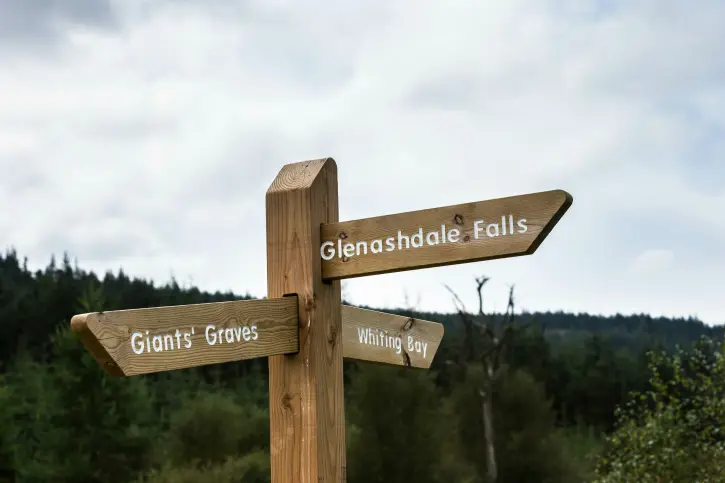
Arran has everything you could want from an island adventure. There are clean, sandy beaches galore, rich history and a plethora of archaeological sites, tasty treats to tempt the fussiest foodie, the chance to see red squirrels and other elusive creatures, and of course, some stunning Scottish scenery to rival any of Arran’s sisters in the Western Isles. What's more, there's an excellent public transport network getting you to and around the island, with trains direct from Glasgow Central to the harbour at Ardrossan taking just half an hour. Once you're on dry land again, regular buses will take you from Brodick around the island.
Jump right off the ferry at Brodick and explore Glenrickard, where you’ll find a challenging trail leading past ancient chambered stone cairns and a hill fort from the Iron Age. A short drive away is Dyemill, which offers a steep but rewarding trail leading up the hill for views over the waters of Lamlash Bay and Holy Island.
If you’re travelling with bikes, the 15km Dyemill to Kilmory cycle route starts at Dyemill. In and around the National Trust-owned Brodick Castle, which has served as a fortress since the fifth century, you’ll find over 16km of forest trails to explore by foot or by bike.
The Giants’ Graves at South End forest, near Glenashdale, are a breathtaking point in the journey for any Arran expedition. These impressive prehistoric stones are the subject of many local myths and legends, with one tale even speculating that giants buried their victims here in ancient times. In fact, the unusual horned chambered cairns were built by Stone Age people 5000 years ago, probably for use in religious ceremonies.
You will be walking in the footsteps of Robert the Bruce if you visit King’s Cave—the Scottish hero is said to have sheltered here before the battle of Bannockburn. There are plenty of places to stop nearby and fill up on cheese, chocolate and other tasty treats on your travels round the island.
Getting there
You can jump on a ferry to Brodick several times a day from Ardrossan, which is less than an hour’s drive from Glasgow, or easily accessible by train from Central Station. Alternatively, you can travel via Claonaig on the Kintyre peninsula over to Lochranza.
Mull
The third largest island in Scotland is home to a wealth of flora and fauna, culture, history and stunning scenery. Set off the west coast near Oban, Mull is the perfect place to escape, with attractions and destinations to suit all tastes, and keep all ages entertained.
There is a specific wildlife watching hide at Fishnish, but you can spot a wealth of sea birds including Mull's famous sea eagles at Mull Eagle Watch, open April to September. Marine life such as dolphins, otters and seals are also regular visitors to the island’s coastline. After that, take a leisurely walk along the forest trails at Aros Park, through mature Victorian ornamental trees, an enchanting walled garden, and whispering waterfalls. Aros Park either can be reached by walking along the coastal woodland path from Tobermory Harbour, or from the south by bus from Craignure Ferry to Tobermory.
The very popular Mull and Iona Food Trail brings together the island's finest restaurants, producers, cafes and farmers’ markets in an easy-to-follow trail around the Mull, and its baby sister, Iona. Mull is also popular with outdoor water enthusiasts, with plenty of beaches, rivers, burn pools and lochs for swimming and kayaking. Take a dip, then explore the delights of the food trail… there’s nothing more satisfying than a hearty snack after a day in the water!
Getting there
You can travel to Mull via three routes: Lochaline to Fishnish, Kilchoan to Tobermory, and the most popular route, Oban to Craignure, which takes roughly 45 minutes and runs several times a day. The ferry terminal at Oban is only a short distance from the railway station, with trains running frequently to and from Glasgow Queen Street.
Skye
The largest of the Inner Hebrides, the forests of Skye are set in a stirring landscape of jagged mountains, deeply indented sea lochs and gentle coastal fringes. Renowned worldwide for its exceptional beauty, Skye can be quite busy with tourist traffic, especially in the high season, and is perennially popular with climbers keen to bag all twelve of the island’s munros. The dramatic peaks have served as the inspiration or backdrop for several films and novels, and is soon to be one of the locations used in filming Amazon’s upcoming Lord of the Rings prequel.
If spotting wildlife is your thing, then Skye has plenty to offer. Top of any list is a visit to the otter hide in Kylerhea, which is open all year round. There is an eagle hide at the same destination, open during the high season, which is also well worth a visit. Keep your eyes on the skies in Glen Brittle forest, too—both white-tailed eagles and the majestic golden eagle are known to visit here. Look out for these rare predatory and coastal birds at Glen Brittle, or other seabirds at Broadford—you can report your sightings at the Skye Birds website.
Make sure to bring a pair of binoculars with you—Broadford has incredibly low light pollution, and on a clear night, you’ll see the curve of the Milky Way arc across the inky blackness. For a proper stretch of the legs, the uphill trails at Kyleakin provide more of a challenge for walkers, with the reward of incredible panoramic views over Eilean Bàn.
Getting there:
Getting to Skye is easy – you can take the road bridge from Kyle of Lochalsh to Kyleakin, or one of the two ferries that run from Mallaig and Glenelg.
- The Skye Ferry: Glenelg to Kylerhea
- Calmac Ferries: Mallaig to Armadale
- Report a rare bird sighting on Skye
Raasay
Raasay, close to the island of Skye, is small, gorgeous, and perfect for exploring on bike or foot. The name Raasay, or Ratharsair in Gaelic, translates to mean Isle of the Roe Deer, so keep an eye out for these magnificent beasts and other wildlife such as otters, mountain hares and sea eagles.
There’s plenty of history across the island to explore throughout your visit. Just by the ferry terminal, you can explore the small but perfectly formed forest of Inverarish, complete with the ruins of an Iron Age broch. Brochel meanwhile has trails leading to the ruins of Brochel Castle, a Clan MacLeod stronghold built over 500 years ago.
During the 19th century Clearances, many people were evicted from their homes by desperate landlords, and were forced to start new lives elsewhere. Follow the eastern shore trail to the settlement of Screapadal, movingly remembered in Sorley MacLean's Gaelic poetry. The solemn ruins of the abandoned village are one of the stunning sights you’ll see as you hike the 2 hour, strenuous trail here. You could even end your trip with a wee dram at the Raasay Distillery, the island's first legal still.
Getting there:
From Sconser on Skye, it’s just a short ferry trip to get to the Isle of Raasay.